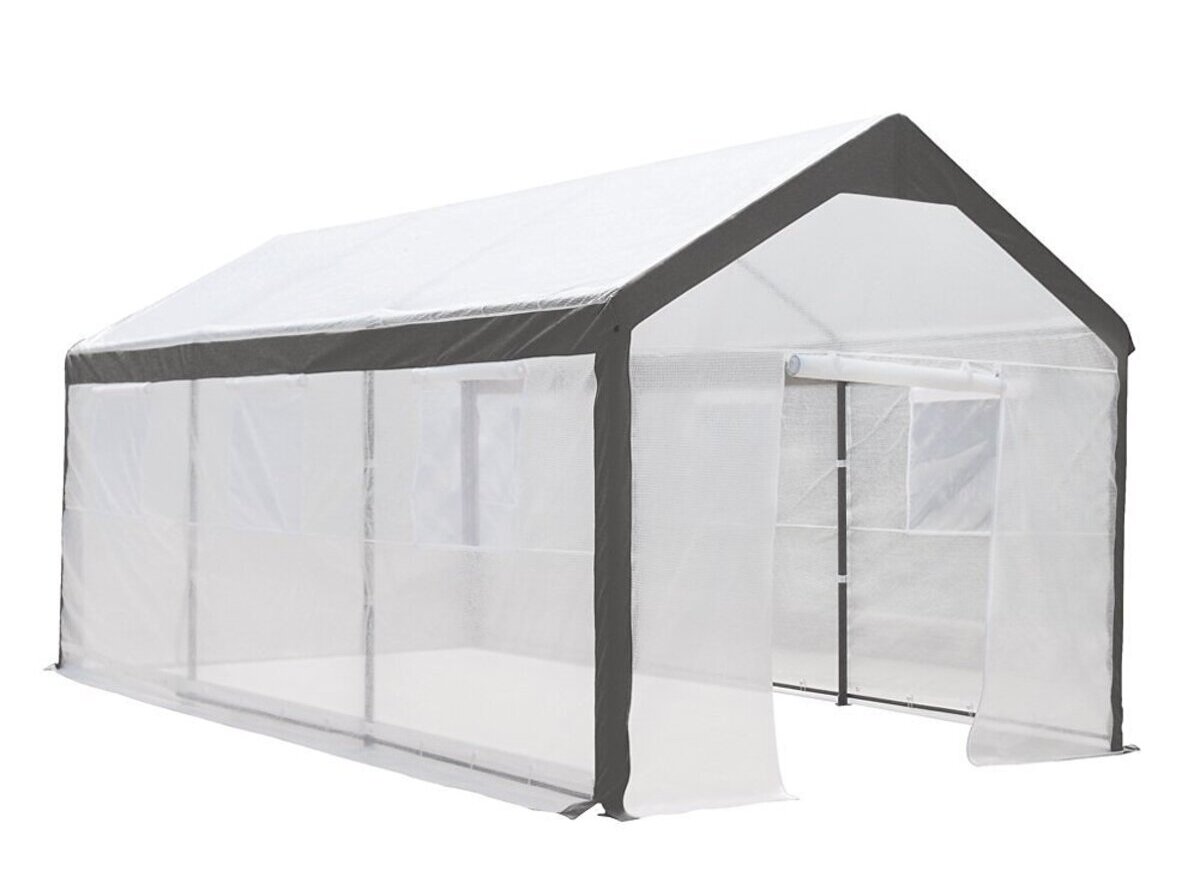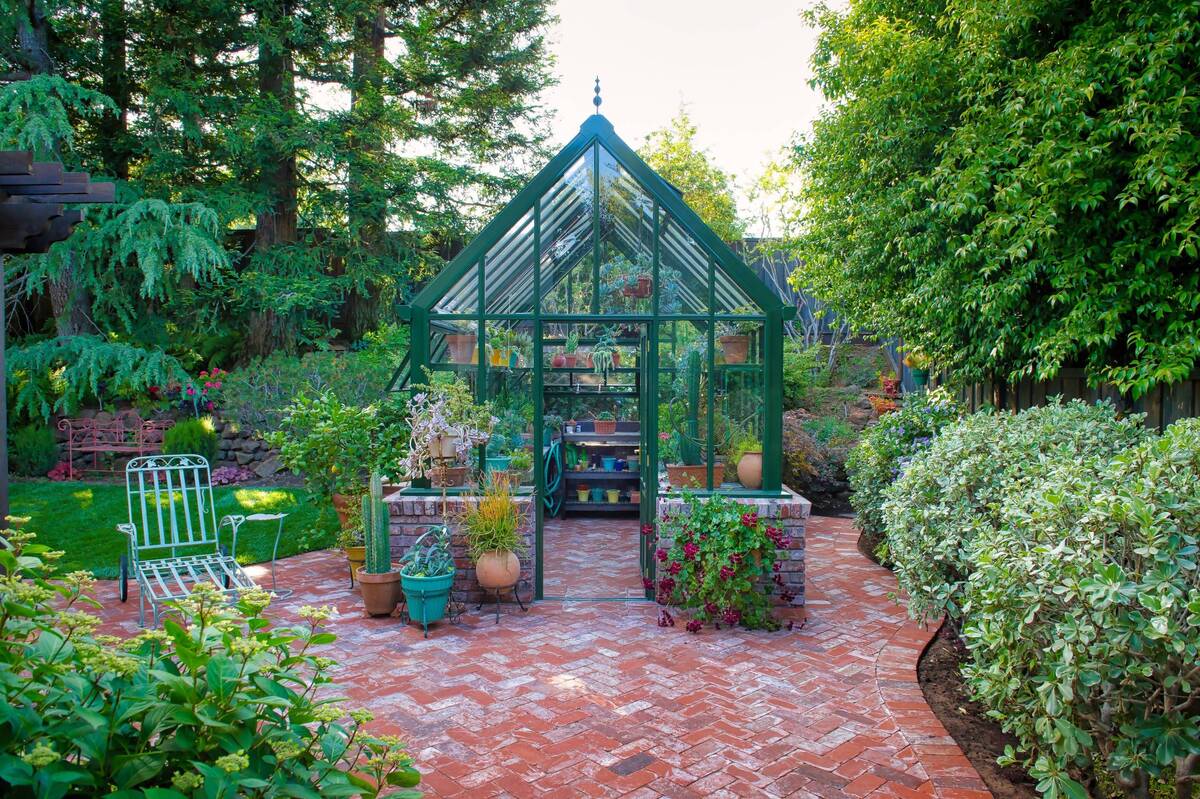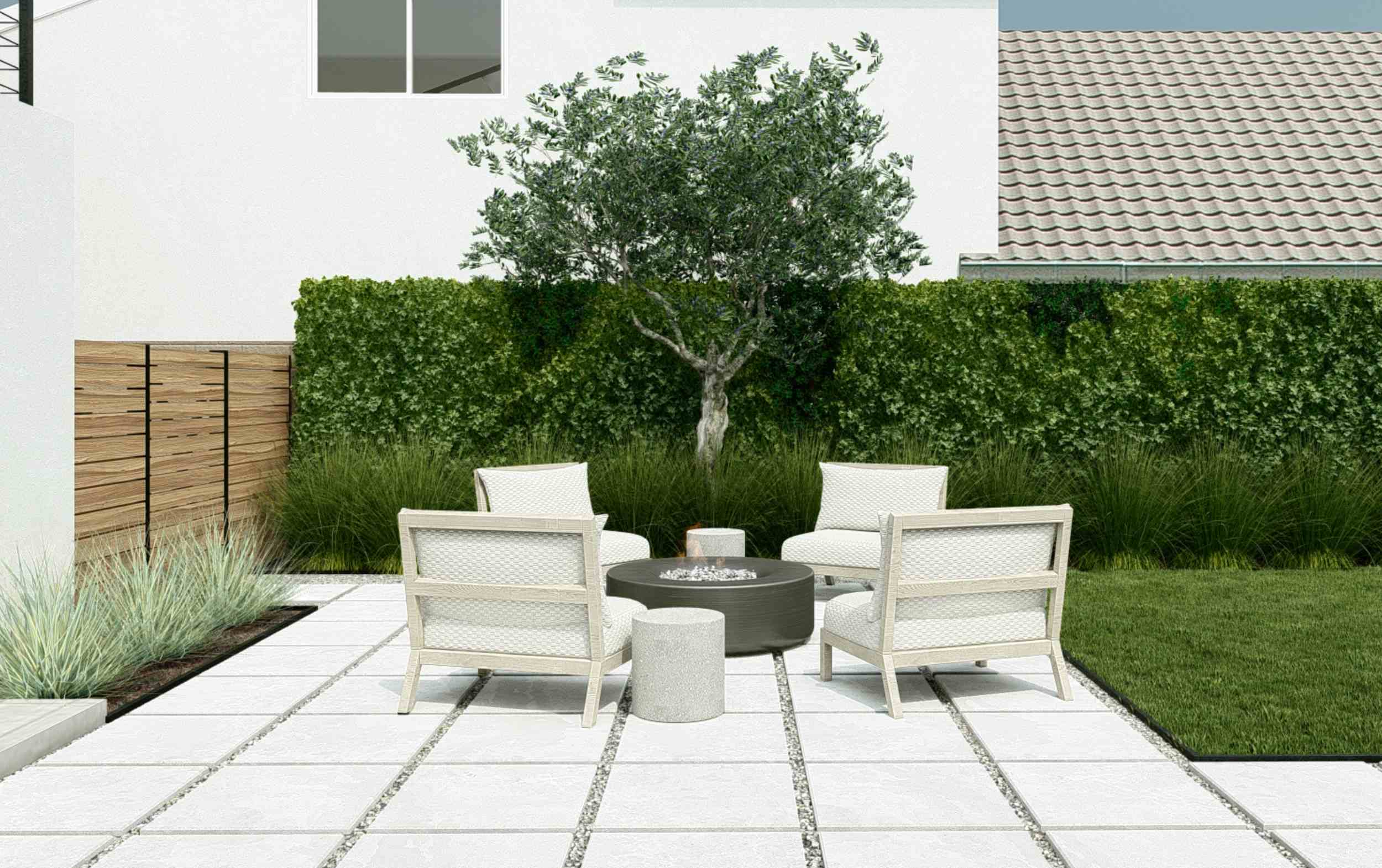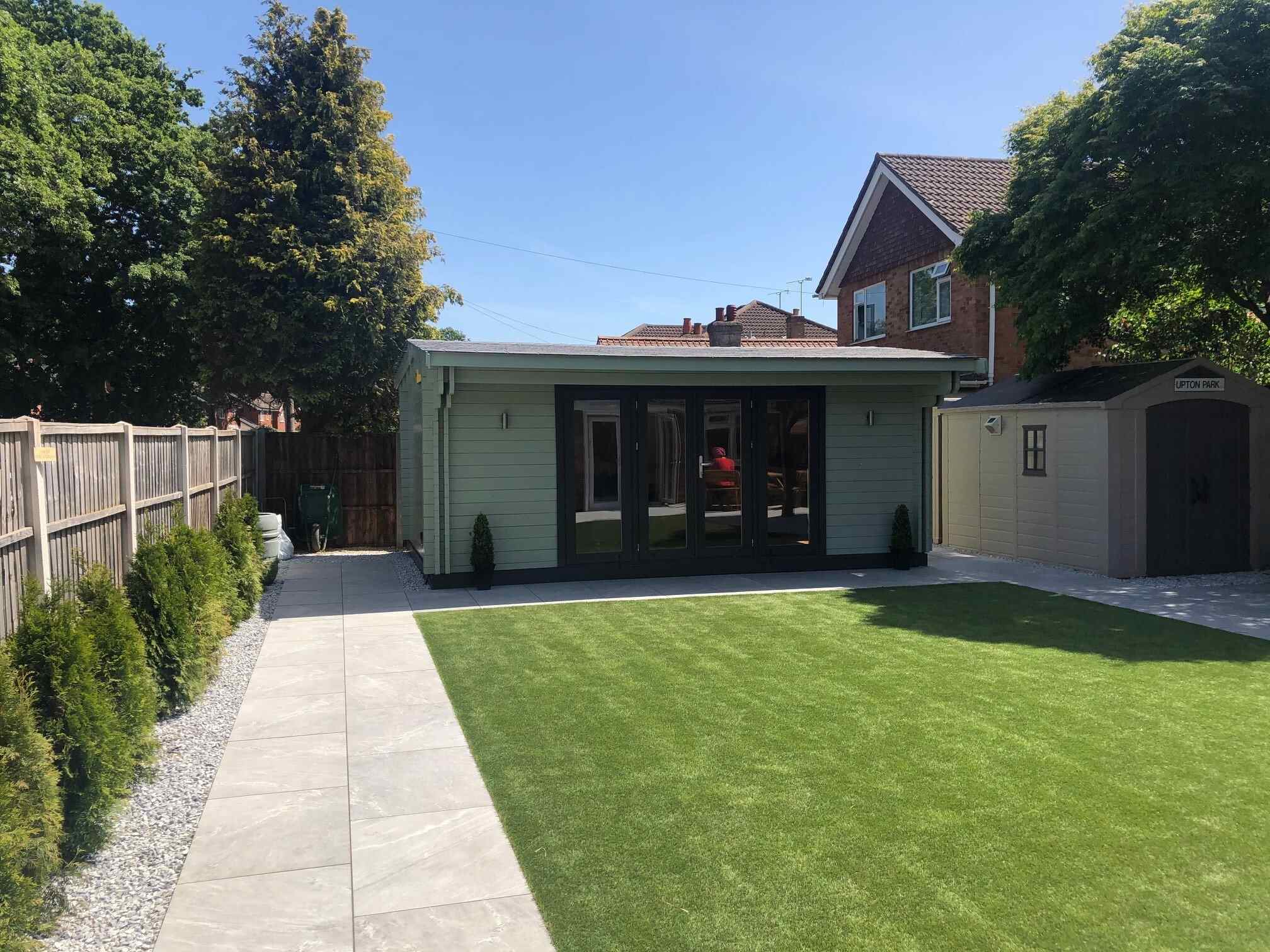Home>Garden Design>How To Design Backyard Patio
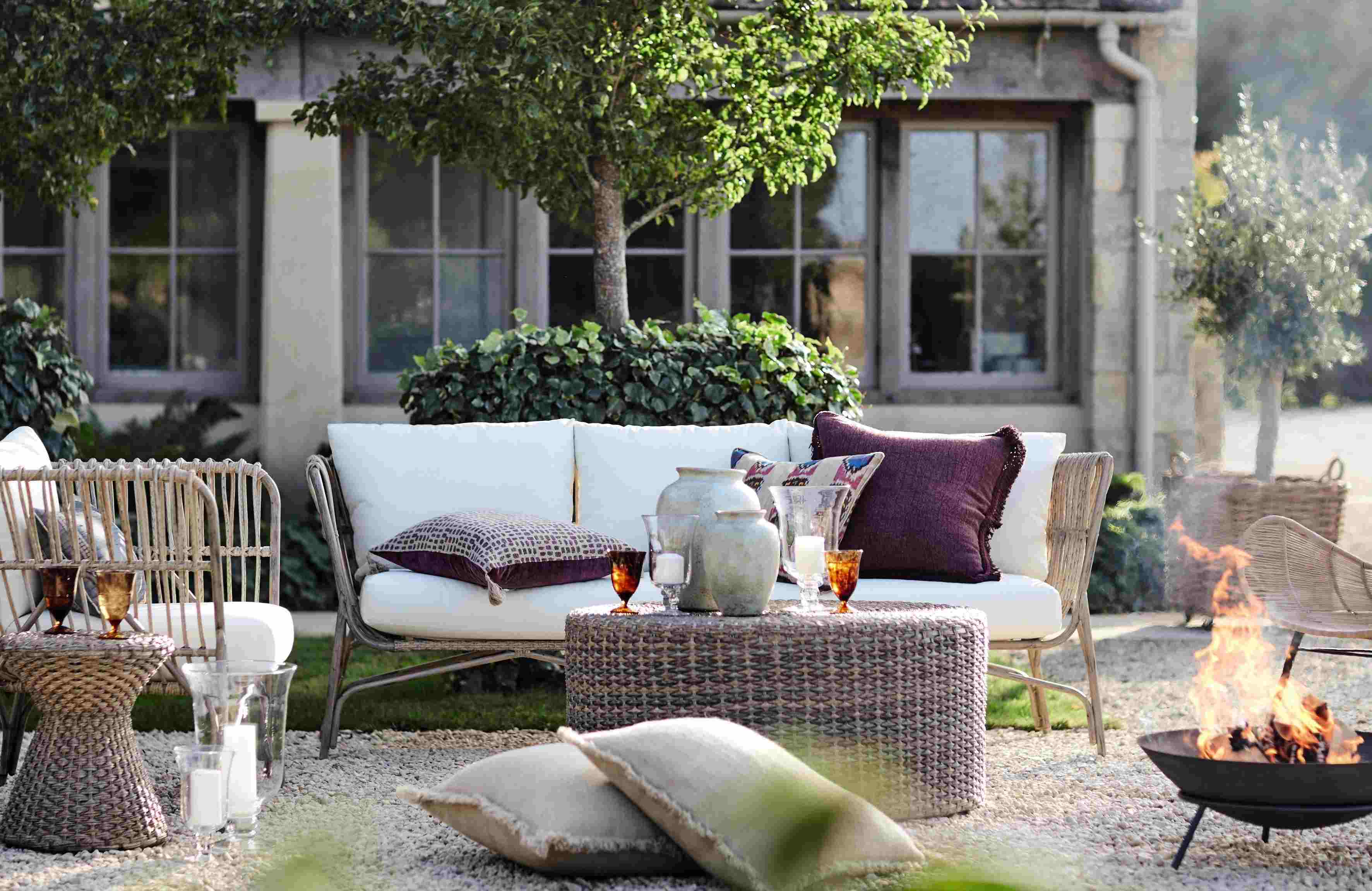

Garden Design
How To Design Backyard Patio
Published: August 5, 2023
Learn how to design a beautiful and functional backyard patio with landscape design ideas, tips, and inspiration. Create your dream outdoor space today!
(Many of the links in this article redirect to a specific reviewed product. Your purchase of these products through affiliate links helps to generate commission for Chicagolandgardening.com, at no extra cost. Learn more)
Table of Contents
- Introduction
- Step 1: Assessing the Space
- Step 2: Deciding on a Layout
- Step 3: Selecting Materials
- Step 4: Creating a Theme
- Step 5: Incorporating Furniture and Decor
- Step 6: Adding Lighting Features
- Step 7: Addressing Privacy
- Step 8: Adding Greenery and Plants
- Step 9: Creating a Focal Point
- Step 10: Maintaining and Upgrading the Patio
- Conclusion
Introduction
Designing a backyard patio is an exciting project that allows you to transform your outdoor space into a functional and inviting oasis. Whether you’re looking to create a serene retreat or an entertainment area for hosting friends and family, a well-designed patio can enhance the beauty and usability of your backyard.
When designing a patio, it’s important to consider various factors such as the available space, desired layout, materials, theme, furniture, lighting, privacy, greenery, and focal points. Each element plays a crucial role in creating a cohesive and enjoyable outdoor environment.
In this article, we will guide you through the step-by-step process of designing a backyard patio, providing you with valuable insights and expert tips to help you create the perfect outdoor space that suits your needs and preferences.
So, roll up your sleeves, grab some inspiration, and let’s dive into the exciting world of backyard patio design!
Step 1: Assessing the Space
The first step in designing your backyard patio is to assess the available space. Take measurements of your backyard and consider any existing features such as trees, slopes, and structures. This will help you determine the size and shape of your patio.
Consider how you want to use the space and what activities you plan to accommodate. If you enjoy outdoor dining and entertaining, you’ll need space for a dining set and possibly a barbecue area. If relaxation is your focus, a cozy seating area with lounge chairs or a hammock might be more suitable.
Take note of the surrounding views and sunlight patterns. If you have a beautiful garden or want to enjoy a specific view, plan your patio accordingly. Similarly, observe how the sunlight falls on different parts of the yard throughout the day to determine the placement of shade structures or trees.
Keep in mind any functional considerations such as access to the house, pathways, or other areas of the backyard. Design your patio in a way that allows for easy movement and flow between spaces.
Lastly, consider the overall style and architecture of your home. You can choose to complement or contrast with the existing aesthetic by selecting appropriate materials, colors, and patterns for your patio.
By thoroughly assessing the space, you can ensure that your patio design aligns with your needs, maximizes the available area, and integrates harmoniously with the surrounding environment.
Step 2: Deciding on a Layout
Once you’ve assessed the space, the next step in designing your backyard patio is to decide on a layout. The layout will determine how the different elements of your patio, such as furniture, walkways, and plantings, will be arranged.
Consider the flow and functionality of the space. Think about how you want to move around the patio and how you want the different areas to interact with each other. For example, if you have a dining area, make sure it is easily accessible from the kitchen or main entrance of the house.
It’s also important to consider the size and scale of your patio. If you have a small space, you may need to prioritize certain features and make efficient use of the available area. On the other hand, if you have a larger space, you have more flexibility to create distinct zones and incorporate various elements.
One popular layout option is the classic L-shape, where one side of the patio is dedicated to dining and the other side is for lounging or gathering. This layout provides a clear division between different activities while maintaining a sense of unity.
Another layout option is the U-shape, which creates a more enclosed and intimate space. This can be ideal if you want to create a cozy outdoor living room or if you want to maximize privacy.
If you’re looking for a more open and flexible layout, consider a free-flowing design. This allows for easy movement and can be adapted to different purposes and arrangements depending on your specific needs.
Remember to consider focal points and views when deciding on the layout. If you have a beautiful garden or a stunning landscape, orient your patio in a way that maximizes the visual appeal.
Ultimately, the layout of your patio should reflect your personal style, preferences, and the activities you plan to enjoy in the space. By carefully considering the flow and design, you can create a patio layout that is not only functional but also visually appealing.
Step 3: Selecting Materials
Choosing the right materials is essential in creating a durable and visually appealing backyard patio. The materials you select will not only impact the aesthetics but also the maintenance and longevity of your outdoor space.
When selecting materials, consider the overall style and theme you want to achieve. There is a wide range of materials to choose from, including natural stone, concrete, brick, pavers, wood, and composite decking.
Natural stone, such as flagstone or slate, adds a timeless and elegant look to your patio. It is durable and can withstand changing weather conditions. Concrete is a versatile and low-maintenance option, available in various colors and finishes. Brick offers a classic and rustic charm, perfect for traditional or cottage-style patios.
Pavers come in different shapes, sizes, and textures, giving you plenty of design possibilities. They are durable, easy to install, and can be arranged in different patterns to create visual interest. Wood gives a warm and inviting feel and is suitable for creating a natural and organic look.
Consider the practical aspects of the materials as well. Some materials may be more slip-resistant, heat-resistant, or require less maintenance than others. Think about the climate in your area and choose materials that can withstand the local weather conditions.
Additionally, think about how the materials will complement the other elements of your patio, such as furniture and decor. Consider the color, texture, and finishes of the materials and how they will interact with the overall design.
Don’t forget to assess the cost and budget for your patio project. Some materials may be more expensive than others, and it’s important to select options that fit within your financial means.
Overall, choosing the right materials for your backyard patio involves considering the style, durability, maintenance, practicality, and cost. By selecting materials that align with your preferences and needs, you can create a stunning and functional outdoor space that will stand the test of time.
Step 4: Creating a Theme
Creating a theme for your backyard patio adds personality and cohesiveness to your outdoor space. It sets the overall mood and style, allowing you to create a specific ambiance that aligns with your preferences and complements your home’s architecture.
Start by considering the existing style of your home and backyard. Is it contemporary, traditional, rustic, or modern? You can choose a theme that either complements or contrasts with the existing aesthetics.
Think about the atmosphere you want to create in your patio. Do you envision a serene and tranquil retreat, a vibrant and tropical oasis, or a cozy and intimate space? Select a theme that reflects the desired ambiance.
Gather inspiration from various sources, such as nature, travel, or your favorite design styles. Look for color schemes, patterns, textures, and materials that inspire you. This can help narrow down your options and bring your vision to life.
Consider incorporating a specific design motif or element throughout your patio. For example, if you’re going for a Mediterranean theme, you can use plaster textures, wrought iron accents, and vibrant blue and white color schemes.
Don’t forget about the smaller details when selecting a theme. Choose outdoor fabrics and cushions that complement your theme, as well as accessories like planters, lanterns, or artwork that reinforce the overall aesthetic.
Remember to balance the theme with practicality and functionality. Ensure that your patio design allows for comfortable seating, adequate shade, and easy maintenance.
By creating a theme for your backyard patio, you can transform it into a cohesive and visually appealing outdoor space. A well-executed theme adds character and charm, making your patio a true extension of your home and personal style.
Step 5: Incorporating Furniture and Decor
When designing your backyard patio, selecting the right furniture and decor is crucial in creating a comfortable and inviting space. Furniture and decor not only serve a functional purpose but also contribute to the overall aesthetic and atmosphere of your outdoor area.
Start by considering the activities you plan to enjoy on your patio. If you enjoy outdoor dining and entertaining, a dining set with ample seating is essential. Look for durable and weather-resistant materials such as aluminum, teak, or synthetic wicker.
If relaxation is your focus, consider incorporating comfortable seating options like lounge chairs, hammocks, or outdoor sofas. Choose cushions and pillows made from outdoor fabrics that are resistant to fading and moisture.
When selecting furniture, consider the size of your patio and the number of people you intend to accommodate. Opt for pieces that are proportionate to the space and allow for easy movement and flow.
Enhance the atmosphere of your patio by incorporating decorative elements like outdoor rugs, throw pillows, and outdoor curtains. These add color, texture, and style to your seating areas and create a cozy and welcoming ambiance.
Don’t forget about storage and organization. Look for furniture with built-in storage options like coffee tables with hidden compartments or ottomans with removable lids. This will help keep your patio clutter-free and provide easy access to items such as cushions or outdoor games.
Consider adding features like umbrellas, pergolas, or shade sails to provide relief from the sun during hot summer days. These structures also add visual interest and can create a more intimate and cozy atmosphere.
Finally, accessorize your patio with decor that enhances the overall theme. Hang outdoor string lights for a charming and magical touch in the evenings. Bring in potted plants, lanterns, or artwork that align with your chosen theme.
By carefully selecting furniture and decor that is both functional and visually appealing, you can transform your backyard patio into a comfortable and aesthetically pleasing outdoor living area. These elements add the finishing touches to your patio design and make it a true extension of your personal style and preferences.
Step 6: Adding Lighting Features
Adding lighting features to your backyard patio is essential for extending the usability of the space into the evening hours and creating a warm and inviting atmosphere. Properly placed lighting can highlight the beauty of your patio, provide functional illumination, and set the mood for different activities.
Start by considering the overall purpose and mood you want to achieve with your patio lighting. Do you want soft, ambient lighting for intimate gatherings or brighter task lighting for activities like cooking or reading?
One popular lighting option is string lights. Hang them across the patio or drape them around trees or posts. String lights create a cozy and enchanting atmosphere, perfect for outdoor dining or relaxing under the stars.
Consider including pathway lighting to guide the way and create a safe and visually appealing walkway. Solar-powered path lights are a convenient option that can provide a soft glow without the need for wiring or electricity.
Another option is to incorporate accent lighting to highlight specific features of your patio, such as plants, architectural elements, or a focal point. Use well-placed spotlights or uplights to create dramatic effects and draw attention to these areas.
You can also add functional lighting to specific areas, such as a dedicated cooking station or an outdoor bar. Install task lighting, such as overhead lights or wall-mounted fixtures, to ensure you have adequate illumination for these activities.
Consider incorporating lighting features that are both practical and decorative. Use lanterns, torches, or fire pits to add warmth and cozy lighting. These options not only provide light but also create a cozy and inviting ambiance.
Make sure to install lighting that is weather-resistant and suitable for outdoor use. LED lights are energy-efficient, long-lasting, and available in a variety of styles. Additionally, consider using smart lighting systems that allow you to control the ambiance and brightness with ease.
Experiment with different lighting combinations and create layers of light to add depth and dimension to your patio. Remember to balance functionality with aesthetics to create an inviting and visually appealing outdoor living space.
By adding well-planned lighting features, you can transform your backyard patio into a magical and enchanting space that can be enjoyed both day and night.
Step 7: Addressing Privacy
Ensuring privacy in your backyard patio is important for creating a comfortable and intimate space where you can relax and enjoy your outdoor activities without feeling exposed to the prying eyes of neighbors or passersby. There are several strategies you can employ to address privacy and create a secluded oasis in your patio.
One effective way to enhance privacy is by installing fencing or a privacy screen around your patio. You can opt for traditional wooden or vinyl fencing for a more permanent solution, or choose versatile privacy screens made from materials like bamboo, fabric, or outdoor curtains. These screens can be easily adjusted to provide the desired level of privacy while adding a touch of elegance to your patio.
Consider using plants and greenery to create a natural privacy barrier. Tall hedges, shrubs, or climbing vines can be used to create a living privacy wall around your patio. Select evergreen plants for year-round privacy or choose flowering plants to add beauty and color to your outdoor space.
If space permits, adding a pergola, arbor, or gazebo to your patio can not only create a sense of privacy but also provide shade and a focal point for your outdoor area. These structures can be adorned with climbing plants or outdoor curtains for added privacy and charm.
Another option is to strategically position tall planters or trellises around your patio. These can be filled with colorful flowers, climbing plants, or even a combination of vines and lattice panels to add privacy and visual interest.
Incorporating water features, such as fountains or water walls, can also help in creating a tranquil and private atmosphere. The soothing sound of flowing water can provide a sense of seclusion and drown out any unwanted noise from outside.
Choose the right furniture and placement to maximize privacy. Create cozy seating areas that are shielded from view by strategically positioning furniture or utilizing outdoor privacy curtains. Incorporate tall potted plants or decorative screens between seating areas to create additional privacy buffers.
By addressing privacy concerns in your backyard patio, you can create a secluded and intimate space where you can fully relax and unwind. Implementing a combination of fencing, privacy screens, plantings, and other strategic design elements will allow you to enjoy your outdoor activities without feeling exposed to the outside world.
Step 8: Adding Greenery and Plants
Integrating greenery and plants into your backyard patio not only enhances the visual appeal of the space but also brings life and freshness to your outdoor oasis. Plants can create a vibrant and inviting atmosphere while providing shade, privacy, and even attracting birds and butterflies. Here are some tips for incorporating greenery into your patio design:
Start by considering the available space and sunlight conditions in your patio. Identify the areas that receive ample sunlight and choose plants that thrive in those conditions. If you have limited sunlight, opt for shade-loving plants or utilize containers that can be moved to optimal spots throughout the day.
Choose a variety of plant types to create a visually interesting and harmonious composition. Consider using a mix of tall shrubs or small trees to provide privacy and create a sense of enclosure. Combine cascading or trailing plants with upright plants to add texture and depth.
Use potted plants to bring greenery to your patio if you have limited planting space or prefer a more flexible design. Select pots in different shapes, sizes, and materials to add visual interest and complement the overall style of your patio.
Consider incorporating fragrant plants to stimulate your senses and create an enjoyable outdoor experience. Herbs like lavender, rosemary, and mint not only smell great but can also be used in cooking or for making refreshing drinks.
When choosing plants, pay attention to their maintenance requirements. Opt for plants that are suited to your climate and that fit within your desired level of maintenance. Some plants are more low-maintenance and suited for those who prefer minimal upkeep.
In addition to ornamental plants, you can also consider incorporating edible plants into your patio design. Planting herbs, vegetables, or fruits in containers can provide both beauty and a bountiful harvest.
Consider vertical gardening options to maximize space and add a unique flair to your patio. Install trellises or vertical planters on walls or fences to grow climbing plants or create a green wall effect.
Finally, remember to provide proper care and maintenance for your plants, including regular watering, pruning, and fertilizing. By giving your plants the attention they need, you will ensure their health and longevity.
By incorporating greenery and plants into your backyard patio, you bring a sense of nature and tranquility to your outdoor space. The addition of plants adds color, texture, and life, creating a welcoming and refreshing environment where you can relax and recharge.
Step 9: Creating a Focal Point
Creating a focal point in your backyard patio is essential for drawing the eye and adding visual interest to the space. A focal point serves as the centerpiece of your patio design, capturing attention and creating a sense of harmony and balance. Here are some ideas to help you create a captivating focal point:
One popular option is to incorporate a fire feature as your focal point. A fire pit or an outdoor fireplace not only adds warmth and coziness to your patio but also serves as a gathering point for socializing and relaxation. Arrange seating around the fire feature to create a comfortable and inviting space.
If you want to incorporate water into your focal point, consider adding a water feature such as a fountain or a pond. The sight and sound of flowing water create a soothing and tranquil ambiance that can elevate the overall atmosphere of your patio. Choose a water feature that complements the size and style of your space.
A statue or sculpture can also serve as a focal point, adding an artistic and eye-catching element to your patio. Select a sculpture that reflects your personal taste and complements the overall theme of your outdoor space. Place it in a prominent position where it can be appreciated as a striking centerpiece.
If you have a green thumb, consider creating a focal point with a stunning and well-maintained garden bed. Choose a variety of plants with different heights, colors, and textures to create a visually captivating display. Position the garden bed in a central location to ensure it commands attention.
Another creative option is to utilize a visually striking piece of outdoor furniture as your focal point. This could be a unique and stylish seating arrangement, a colorful hammock, or a statement outdoor dining set. Choose a piece that stands out and becomes the centerpiece of your patio design.
It’s also possible to create a focal point with lighting elements. Hang an eye-catching pendant light or chandelier above your patio dining table, or install a cluster of string lights in a captivating pattern. Lighting can not only provide functional illumination but also add a touch of magic and charm.
Regardless of the focal point you choose, ensure that it complements the overall design and style of your patio. It should be proportionate to the space and create a sense of unity and coherence. Don’t overcrowd your patio with multiple focal points, as it can create visual clutter.
By creating a focal point in your backyard patio, you elevate the overall design and captivate your guests. It becomes a conversation piece and draws attention, setting the stage for memorable outdoor experiences. Take the time to carefully choose and arrange your focal point to achieve the desired impact and aesthetic appeal.
Step 10: Maintaining and Upgrading the Patio
Once you have designed and created your dream backyard patio, it’s important to prioritize its maintenance and consider opportunities for future upgrades. Regular maintenance will keep your patio in good condition and ensure its longevity, while upgrades can enhance its functionality and aesthetic appeal over time. Here are some tips for maintaining and upgrading your patio:
Regular cleaning is essential to keep your patio looking its best. Sweep away debris, remove any stains or spills, and wash the surface periodically to prevent buildup of dirt or grime. Be mindful of the specific materials used in your patio and choose cleaning methods and solutions that are suitable for them.
Inspect and repair any damaged or worn-out components of your patio. Replace cracked pavers or tiles, fix loose railings or handrails, and repair any structural issues. By addressing these maintenance tasks promptly, you can prevent further damage and ensure the safety and longevity of your patio.
Consider upgrading your patio furniture to enhance comfort and style. Replace worn-out cushions, invest in weather-resistant fabrics, or consider adding additional seating or dining options to accommodate larger gatherings or changing needs. Upgrading your furniture can significantly improve the functionality and visual appeal of your patio.
If you want to improve the shade and protection on your patio, consider adding or upgrading your patio cover. Options include retractable awnings, pergolas with adjustable louvers, or umbrellas. These features can provide shade during hot summer days and protection from the elements during inclement weather.
Upgrade your patio lighting to create a different ambiance or enhance security. Consider installing energy-efficient LED lights, smart lighting systems, or adding additional fixtures to illuminate different areas of your patio. Lighting upgrades can transform the atmosphere of your patio and improve its usability during evening hours.
Consider adding practical features and elements to enhance the functionality of your patio. This could include an outdoor kitchen or barbecue area, a built-in bar or beverage station, a garden shed or storage area, or an outdoor shower. These additions can make your patio a more versatile and convenient space for various activities.
Regularly evaluate your landscaping and greenery to maintain their health and appearance. Trim overgrown plants, replace any dying or diseased plants, and freshen up your garden beds or containers with new flowers or foliage. Keep up with regular watering, fertilizing, and pruning to ensure the vitality of your plants.
Stay informed about the latest trends and innovations in patio design and outdoor living. Explore inspiration from magazines, online platforms, or consult with professionals to find new ideas for upgrades or renovations. This can help you stay ahead of the curve and make informed decisions about future enhancements to your patio.
By regularly maintaining and periodically upgrading your patio, you can ensure its longevity and continue to enjoy a beautiful and functional outdoor space for years to come. Stay proactive in caring for your patio, and don’t be afraid to explore new possibilities and upgrades to keep it fresh and exciting.
Conclusion
Designing a backyard patio is an exciting and rewarding project that allows you to create an outdoor space that reflects your personal style and enhances your lifestyle. By following the step-by-step process outlined in this guide, you can create a beautiful and functional patio that brings joy and relaxation to your outdoor living experience.
From assessing the space and deciding on a layout to selecting materials, incorporating furniture and decor, and adding greenery and lighting, each step plays a crucial role in bringing your patio vision to life. By giving careful thought to these elements, you can create a patio that is not only visually appealing but also practical and enjoyable.
Remember to consider your unique needs and preferences throughout the design process. Whether you’re looking for a serene retreat, an entertainment hub, or a place to connect with nature, tailor your patio to suit your specific desires and lifestyle.
Lastly, don’t forget to maintain and periodically upgrade your patio to ensure its longevity and to adapt to your evolving needs. Regular cleaning, repairs, and upgrades will keep your patio looking and functioning its best, allowing you to continue enjoying it for years to come.
Now, armed with this knowledge and inspiration, it’s time to embark on your journey to create the backyard patio of your dreams. Let your creativity and personal style guide you as you design and transform your outdoor space into a haven where you can relax, entertain, and make lasting memories.


